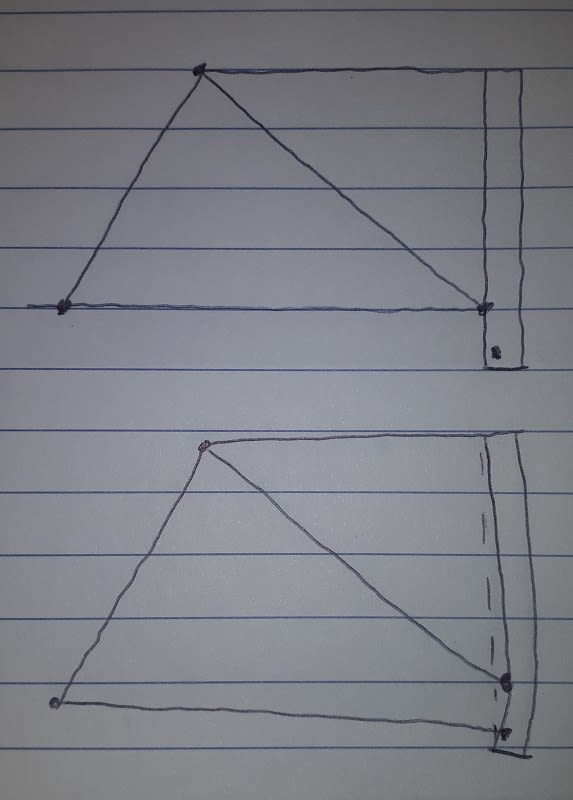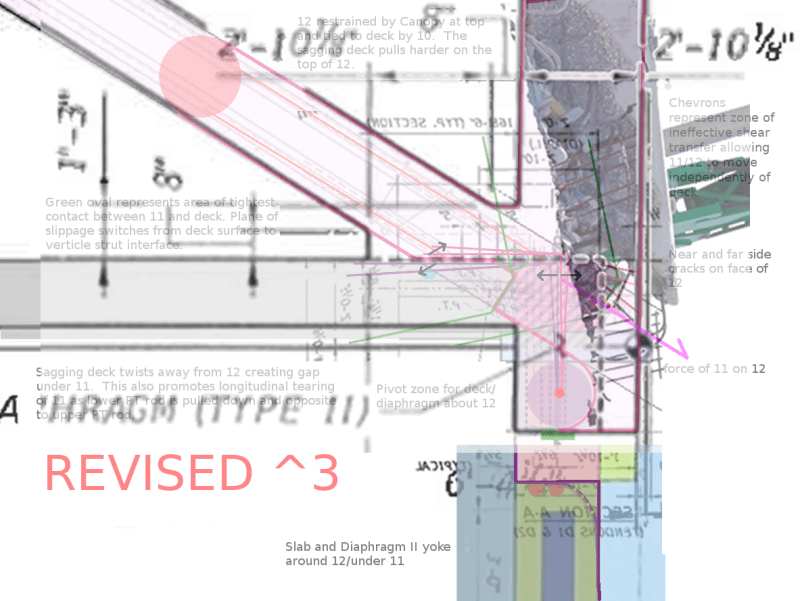The photo of cracking of the north face of 11 in the report was pre-collapse. It could be due to the moment induced by some drop in node 10/11 during the early stages of slip in 11/12. I think the geometry shows 10/11 drops about twice the amount of slip at 11/12 (while member 11 is intact).
I think it is helpful to visualize the collapse sequence from the standpoint of vertical drop in node 10/11 and node 9/10.
If we accept the idea that the deck surface immediately under and in contact with member 11 has allowed slip in the cold joint, which photos taken seem to show, then any remaining resistance is under member 12 and may include any cross plane reinforcing. However, the WJE report and tests show that slip of the joint was only 0.02 to 0.025 inches at maximum resistance so it is likely that the 6 - #7 hoop bars have sheared when a bit more slip has developed.
Now if we fold in your earlier thought that member 12 has high moments causing tension in the north face, and hinges about the 3 - #11 bars in its south face, that moment would seem to be caused by the dropping of node 10/11. In observing photos of node 11/12 area of the deck, it appears the #11 bars in the south face forced the failure zone to drop to the top of the 8 inch pipe thru the diaphragm. That could indicate the reinforcing across the top of the deck at the joint with 12 provided more capacity than the deeper zones and sides, particularly since diagonal cracking had already developed in the entire zone from vertical loads in the end diaphragm.
While focused on member 12 having moment, we see member 1 has two hinges intentionally formed and has far more reinforcing than 12. Member 1 has 14 - #11 bars, totaling 21.8 sq in, while member 12 has 3 - #11 bars and 9 - #7 bars totaling 10.68 sq in. And member 12 has no formed hinges to release moments. Another indication of an apparent discontinuity in the contract drawings.
A lot is happening just after the collapse is triggered. Node 11/12 is sliding to the north, member 11 is pushing against member 12 unless 12 has already lost any ability to resist. Node 10/11 is dropping, inducing moments in member 12 and thus into its connection (if any remains) to the deck. Node 9/10 is dropping, causing the deck between 9/10 and the pylon to rotate, and slip to the south. Which one is ahead? It is a horse race, in my opinion.


